-
Japan attempts "cold shutdown" at reactor no. 1
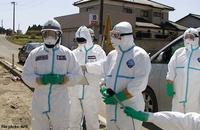
Officials at the Tokyo Electric Power Company (TEPCO) hope to bring reactor no. 1 at the beleaguered Fukushima Daiichi nuclear plant to a “cold shutdown” by the end of the week; plant operators will attempt to bring the temperature inside the reactor below the boiling point of water so that it will no longer produce radioactive steam; the building housing reactor no. 1 must be vented so that all the radioactive air that has accumulated is released allowing workers to approach the reactor; once inside workers will inject cold water into the reactor’s primary containment structure; injecting tons of water into a damaged containment unit that houses uranium makes some scientists uneasy
-
-
Men arrested outside U.K. largest nuclear plant, then released
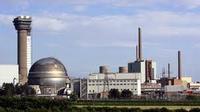
Five young men of Bangladeshi origin were arrested outside Sellafield, the U.K.’s largest nuclear facility hours after President Obama announced the killing of OBL; the men were arrested for taking pictures and behaving suspiciously (the Civil Nuclear Constabulary said that the men were “unable to give a satisfactory account of their actions”); after being questioned the men were released as it appears that they had taken a wrong turn; the men told police they were traveling along the road only because their in-car satellite navigation system had taken them the wrong way on the remote road just off the coast of Cumbria, close to the Lake District; Sellafield is one of only four nuclear fuel reprocessing plants in the world
-
-
Recipe for radioactive materials helps in studies of nuclear waste and fuel storage pools
Easy-to-follow recipes for radioactive compounds like those found in nuclear fuel storage pools, liquid waste containment areas, and other contaminated aqueous environments have been developed by researchers at Sandia National Laboratories; the trick to the recipes is choosing the right templates; these are atoms or molecules that direct the growth of compounds in much the way islands act as templates for coral reefs
-
-
Solving nuclear fuel storage problem more crucial than ever: MIT report
The Japan nuclear crisis adds to the urgency of dealing with radioactive used fuel, and may raise cost of new plants, MIT Energy Initiative study says; the report recommends that an interim solution be developed to remove spent fuel storage facilities at reactor sites, and move to regional, medium-term repositories where the fuel can be monitored and protected as it decays over time
-
-
Fears over nuclear energy stall Kentucky nuclear plans
Days before the 11 March earthquake and tsunami struck Japan causing its ongoing nuclear crisis, a bill that would have eased restrictions on the construction of a nuclear power plant in Kentucky failed to pass the state legislature dashing the hopes of atomic energy advocates; the proposed site currently houses a uranium enrichment facility, but it is expected to be shut down in the near future leaving 1,200 people out of work; safety advocates are concerned because the site is located near the New Madrid seismic zone; Kentucky generates 90 percent of its power from coal, and Governor Beshear proposed in 2008 to use nuclear power to generate 30 percent of the state’s energy by 2030
-
-
Iran's control systems attacked by another virus

Iran admitted it has been attacked by another virus aiming to disrupt its industrial control systems; the commander of Iran civil defense said, though, that the virus has been caught in time and neutralized by Iran’s “young experts”; Gholamreza Jalali described the virus as “congruous and harmonious with the (computer) system and in the initial phase it does minor damage and might be mistaken for some executive files of government organizations”; in the summer, nearly 42,000 computers and servers in Iran’s industrial control systems — many of them in Iran’s nuclear weapons program — were infected; the damage to uranium enrichment centrifuges was especially great, causing Iran in mid-November to halt enrichment operations; Stuxnet has also infected the Bushehr nuclear reactor; the reactor was supposed to come on line in August, but it is still not operational, and has missed several start-up deadlines
-
-
Opposition to nuclear power grows in India
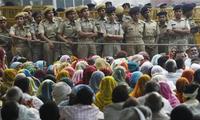
Opponents of nuclear power in India have received a major boost following the continuing nuclear crisis in Japan; the Indian government has planned an aggressive push to develop thirty-nine new nuclear power plants; by 2050, the government hopes to generate 25 percent of the country’s electricity with nuclear power; as a result of the events at Japan’s Fukushima Daiichi nuclear plant, Indian scientists, politicians, and residents have become increasingly opposed to the construction of new nuclear plants; critics cite safety concerns and cleaner alternatives as reasons for their opposition; India faces a real need for power, approximately 40 percent of the country is not connected to the electrical grid and most major cities do not have reliable power twenty-four hours a day
-
-
Cooling pools or dry casks for nuclear waste: which is safer
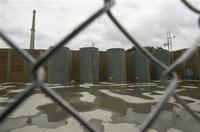
There are two ways to store nuclear waste: in pools of water, where the densely packed uranium rods are cooled by a constant flow of circulating water, or in dry casks — typically barrel-shaped steel-and-concrete structures that stand twenty feet high and sit outdoors — where the uranium loosely packed rods are cooled by passive air; there are 65,000 tons of nuclear waste in the United States, more than in any other nation, and this amount grows by about 2,200 tons each year; the Fukushima disaster demonstrated that dry casks were able to withstand the 11 March combination of earthquake and tsunami much better than cooling pools; the U.S. Nuclear Regulatory Commission must now decide whether cooling pools are safe enough to store nuclear waste, and even whether densely packing nuclear waste is safe
-
-
ElBaradei: nuclear still main alternative to oil
Mohamed ElBaradei, former head of the UN International Atomic Energy Agency (IAEA) said that “Today, nuclear power is the only real alternative to fossil fuel as a source of a reliable supply”; he acknowledged that Fukushima represents a potentially significant setback for nuclear power, but said that “Chernobyl and Fukushima should be shown to be aberrations”
-
-
Tennessee may spend millions to improve nuclear reactor safety
The Tennessee Valley Authority (TVA) is considering spending millions of dollars to bolster its six nuclear reactors against earthquakes and floods; TVA is the first American nuclear plant operator to declare safety changes following events in Japan; TVA is currently considering reducing the amount of fuel that it stores in its spent fuel pools instead transferring older fuel rods to passively cooled “dry casks” ; the operator will also add additional back up diesel generators, make improvements to electrical grids to make them more earthquake resistant, add small generators to recharge cell phone batteries and to keep lights on, and reinforce pipes that send cold water to spent fuel pools
-
-
Abandoning nuclear power would cost Germany billions
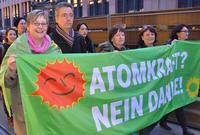
Nuclear power is highly unpopular in Germany, and in the wake of the nuclear disaster in Japan, Germany chancellor Angela Merkel announced that Germany would abandon nuclear power generation (she called it “Atomausstieg,” or “nuclear exit”) and would gradually close its seventeen nuclear power plants; there is a debate in Germany about whether abandoning nuclear power would cost Germany 3 billion Euros a year – or only 2 billion Euros, as the government says it would
-
-
Experts: new U.S. nuclear reactors unlikely soon
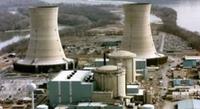
Experts on a panel at Stanford University say radiation leaks at Japan’s Fukushima plant could impact the future of nuclear energy in the United States and abroad; they said that nuclear safety improved after the historic disasters at Three Mile Island and Chernobyl. Richter, and that it was improved further after the 9/11 attacks; they expect similar safety reviews by the U.S. Nuclear Regulatory Commission following the Fukushima accident
-
-
NRC inspects Nebraska reactor radiation exposure
On 3 April, workers at the Cooper Nuclear Station, located near Brownville, Nebraska removed a long tube contaminated with highly radioactive material through the bottom of the reactor vessel, rather than through the top as is usually done, triggering radiation alarms; the NRC is investigating
-
-
Five U.S. nuclear plants in earthquake zones
Five active U.S. nuclear reactors — the Diablo Canyon Power Plant and San Onofre Nuclear Generating Station in California; the South Texas Project near the Gulf Coast; the Waterford Steam Electric Station in Louisiana; and the Brunswick Steam Electric Plant in North Carolina — are situated in seismic activity-prone zones
-
-
Concerns about Illinois nuclear safety trigger inspections
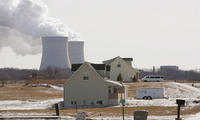
The U.S. Nuclear Regulatory Commission (NRC) is currently performing Special Inspections at the Byron and Braidwood Nuclear plants in Illinois after issues were identified in February and March of 2011; at issue is the ability of pumps to cool the reactor in case of a reactor trip or any reason the system for heat removal became unavailable at both Byron and Braidwood stations which are similar in design
-
- All
- Regional
- Water
- Biometrics
- Borders/Immig
- Business
- Cybersecurity
- Detection
- Disasters
- Government
- Infrastructure
- International
- Public health
- Public Safety
- Communication interoperabillity
- Emergency services
- Emergency medical services
- Fire
- First response
- IEDs
- Law Enforcement
- Law Enforcement Technology
- Military technology
- Nonlethal weapons
- Nuclear weapons
- Personal protection equipment
- Police
- Notification /alert systems
- Situational awareness
- Weapons systems
- Sci-Tech
- Sector Reports
- Surveillance
- Transportation
Advertising & Marketing: advertise@newswirepubs.com
Editorial: editor@newswirepubs.com
General: info@newswirepubs.com
2010-2011 © News Wire Publications, LLC News Wire Publications, LLC
220 Old Country Road | Suite 200 | Mineola | New York | 11501
Permissions and Policies
Editorial: editor@newswirepubs.com
General: info@newswirepubs.com
2010-2011 © News Wire Publications, LLC News Wire Publications, LLC
220 Old Country Road | Suite 200 | Mineola | New York | 11501
Permissions and Policies
